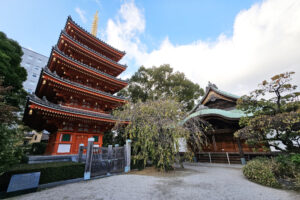Japanese dry gardens, or "karesansui," represent a unique fusion of art, philosophy, and nature. Often found in Zen temples and associated with Buddhist practice, these gardens emphasize simplicity, tranquility, and mindfulness. Through the careful arrangement of rocks, sand, and gravel, they create serene landscapes that invite contemplation and meditation. This article explores the elements, history, and therapeutic qualities of Japanese dry gardens, providing insight into how they have captured the hearts and minds of many across the globe.
Understanding Japanese Dry Gardens: An Overview of Zen Principles
Japanese dry gardens are deeply rooted in Zen Buddhism, embodying principles of simplicity, naturalness, and the contemplation of nature. At their core, these gardens are designed not merely for aesthetic pleasure but as spaces for meditation and self-reflection. The minimalist approach invites visitors to engage with the surroundings, encouraging a deeper awareness of the present moment. The absence of water in these gardens is significant; it symbolizes the idea that one can find beauty and serenity in restraint and simplicity.
The design of a dry garden is often informed by the concept of "wabi-sabi," an aesthetic that appreciates the beauty in imperfection and the transience of life. This philosophy encourages an acceptance of the natural cycle of growth and decay, and it is reflected in the careful selection of materials and forms in garden design. Stones, sand, and gravel are not just elements of a landscape but represent deeper spiritual and philosophical concepts as well.
Furthermore, the layout of a dry garden follows specific principles that promote a sense of balance and harmony. The asymmetrical arrangement of rocks and the meticulous raking of gravel create a visual rhythm that resonates with the Zen ideal of spontaneity and naturalness. Visitors are encouraged to experience the garden from various perspectives, each revealing new layers of meaning and beauty, inviting both introspection and appreciation of the natural world.
In essence, the design of Japanese dry gardens serves as a bridge between human experience and nature, embodying the Zen principles of mindfulness, simplicity, and harmony. These gardens are not just static environments; they are dynamic spaces that facilitate a deeper understanding of oneself and one’s place in the universe.
The History of Dry Gardens: Roots in Ancient Japan’s Culture
The origins of Japanese dry gardens can be traced back to the Heian period (794-1185), when Buddhist monks began to create spaces for meditation and contemplation. Early gardens were often designed as representations of natural landscapes, reflecting the idealized visions of nature prevalent in Japanese culture. During this time, the aesthetics of "shakkei," or "borrowed scenery," emerged, emphasizing the integration of natural surroundings into garden design.
As Zen Buddhism gained prominence in Japan during the Kamakura period (1185-1333), dry gardens began to evolve into their recognizable forms. Monasteries and temples became centers of Zen practice, and gardens were developed to enhance the spiritual experience of meditation. The simplicity and minimalism of dry gardens echoed the teachings of Zen, aligning with the monks’ quest for enlightenment through mindfulness and contemplation.
By the Muromachi period (1336-1573), dry gardens had become a significant aspect of Japanese culture and aesthetics. Influenced by the tea ceremony and the philosophy of simplicity, designers like Soami and Sesshu Toyo began to create gardens that emphasized the beauty of asymmetry and natural forms. These gardens reflected the growing appreciation for Zen aesthetics, where each element was deliberately chosen to convey profound meaning.
The Edo period (1603-1868) saw the popularity of dry gardens spread beyond religious institutions. As samurai and aristocrats embraced Zen philosophy, they incorporated dry gardens into their private residences, further solidifying the garden’s status as an essential aspect of Japanese culture. This period also witnessed a rise in the popularity of Zen rock gardens, which became a staple in many Japanese homes, symbolizing peace and tranquility.
Today, Japanese dry gardens continue to captivate individuals worldwide, serving as a testament to the enduring influence of Zen principles in contemporary design. The historical significance of these gardens highlights their role in shaping not only the landscape of Japan but also the cultural values that resonate with people seeking peace and serenity in their lives.
Key Elements of Japanese Dry Gardens: Stones, Sand, and Raked Patterns
The fundamental components of Japanese dry gardens include stones, sand, and gravel, each serving a distinct purpose in the overall design. Stones are often used to represent mountains or islands, serving as anchors within the landscape. Their placement is deliberate, as different arrangements can evoke various emotions and convey spiritual significance. The choice of stone type, size, and color can dramatically influence the garden’s atmosphere.
Sand and gravel, on the other hand, symbolize water and are meticulously raked to create patterns that suggest ripples and waves. The act of raking is a meditative practice in itself, inviting the gardener to engage physically and mentally with the space. The patterns created in the sand can vary from simple straight lines to intricate circular designs, each conveying different meanings and emotional responses.
Another key element is the careful consideration of negative space, or "ma," which plays a vital role in Japanese garden design. This concept emphasizes the importance of empty spaces, allowing viewers to focus on the elements that are present. By incorporating negative space, dry gardens create an illusion of continuity and expansiveness, enhancing the sense of tranquility and openness.
In addition to these primary elements, the use of moss and other ground cover plants can add layers of texture and color to the garden. While dry gardens are known for their minimalistic approach, the inclusion of plants must be thoughtfully considered, as they should complement the stone arrangements without overwhelming the simplicity of the design. The interplay between hard and soft elements creates a balanced aesthetic that invites contemplation.
Overall, the careful selection and arrangement of these elements are what define the artistry of Japanese dry gardens. Each stone, each grain of sand, and each raked pattern serves a purpose in creating a space that encourages mindfulness, reflection, and a deeper connection to nature.
The Symbolism of Rocks and Gravel in Zen Garden Design
In Japanese dry gardens, rocks and gravel are not merely ornamental; they carry deep symbolic meanings that resonate with the principles of Zen philosophy. Rocks are often seen as powerful representations of strength and permanence. They can symbolize mountains, islands, or even the presence of the divine, representing the connection between the earthly and the spiritual realms. The careful placement of rocks within the garden creates a sense of balance and harmony, inviting contemplation and reflection.
The act of selecting stones also holds significance; each rock is chosen for its unique characteristics, such as shape, texture, and color. Garden designers often consider the energy or "ki" of the stones, believing that each piece contributes to the overall spiritual atmosphere of the garden. This consideration transforms the garden into a living expression of nature’s beauty, highlighting the sacredness of the landscape.
Gravel and sand, on the other hand, symbolize the element of water, representing the flow of life. The meticulous raking of gravel creates patterns that evoke the movement of ripples and waves, encouraging a meditative state of mind. The act of raking itself is a form of meditation, allowing the gardener to connect with the garden on a deeper level. The patterns in the gravel are often thought to suggest the transience of life, a key concept in Zen philosophy.
Furthermore, the maintenance of gravel patterns can be seen as a metaphor for the impermanence of existence. Just as the patterns can be easily disturbed, so too can life be unpredictable and fleeting. This understanding encourages a mindful approach to living, urging individuals to appreciate the present moment and embrace the beauty of impermanence.
Through the thoughtful integration of rocks and gravel, Zen gardens become spaces of profound meaning. They serve as reminders of the interconnectedness of all things and the importance of mindfulness in our pursuit of peace and tranquility.
The Role of Plants: Balancing Nature and Minimalism
While Japanese dry gardens are primarily characterized by their use of rocks and gravel, the careful integration of plants plays a crucial role in achieving a harmonious balance between nature and minimalism. In these gardens, plants are carefully selected to enhance the overall aesthetic without overwhelming the simplicity that defines the space. The choice of greenery often includes moss, small shrubs, and sometimes flowering plants, each chosen for their ability to complement the stone arrangements and gravel patterns.
Moss is a particularly popular choice in dry gardens, as it adds lushness and softness to the landscape. It thrives in shaded areas, making it a perfect ground cover that contrasts beautifully with the starkness of the rocks and gravel. The vibrant green of moss symbolizes life and renewal, serving as a reminder of nature’s resilience despite the austere appearance of the garden.
Incorporating trees or shrubs is another way to introduce plant life into dry gardens. Carefully pruned and shaped, these plants can provide vertical interest and create a sense of depth within the landscape. The selection of plant species is often guided by the principles of Zen, emphasizing the importance of simplicity and balance. For instance, the use of evergreens can symbolize endurance, while flowering plants may represent the fleeting nature of beauty.
The placement of plants is also critical; they are positioned in a way that creates a visual flow across the garden. This arrangement encourages visitors to move through the space, engaging with each element of the garden and fostering a sense of connection to nature. Additionally, the seasonal changes in plant life can add layers of beauty and complexity, reminding viewers of the cyclical nature of existence.
Ultimately, the role of plants in Japanese dry gardens is to enhance the overall design while maintaining the principles of minimalism. Each botanical element is carefully considered, contributing to the garden’s serene atmosphere and inviting visitors to reflect on the beauty of nature’s simplicity.
Creating Spaces for Meditation: The Serenity of Dry Gardens
Japanese dry gardens are intentionally designed to foster serenity and mindfulness, making them ideal spaces for meditation and reflection. The minimalist aesthetic encourages visitors to quiet their minds and engage with their surroundings on a deeper level. By stripping away distractions, these gardens create an environment conducive to introspection and tranquility.
The arrangement of stones and gravel, combined with the careful selection of plants, creates a serene atmosphere that invites contemplation. The act of walking through the garden or sitting quietly by a stone arrangement allows individuals to connect with the rhythms of nature, promoting a sense of peace and calm. Many people find that spending time in a dry garden can help alleviate stress and anxiety, providing a welcome retreat from the busyness of everyday life.
In addition to their visual appeal, the sounds of a dry garden contribute to the meditative experience. The gentle rustle of leaves, the soft crunch of gravel underfoot, and the distant sounds of nature all work together to create a soothing soundscape. This auditory aspect further enhances the sense of tranquility, allowing visitors to immerse themselves fully in the experience.
Many dry gardens are designed with specific areas for meditation or reflection, such as stone benches or quiet nooks surrounded by greenery. These intentional spaces encourage visitors to pause, breathe, and engage in mindfulness practices. Whether through seated meditation, walking meditation, or simply enjoying the beauty of the garden, each moment spent in a dry garden becomes an opportunity for self-discovery and inner peace.
Ultimately, the serenity of Japanese dry gardens lies in their ability to create spaces that invite contemplation and mindfulness. By engaging with these environments, individuals can cultivate a deeper connection to themselves and the natural world, fostering a sense of calm that resonates long after they leave the garden.
The Art of Raking: Techniques for Crafting Patterns and Textures
The practice of raking gravel and sand in Japanese dry gardens is not merely a maintenance task; it is an art form that embodies the principles of mindfulness and creativity. Raking patterns into the gravel creates visual interest while symbolizing the flow of water, inviting contemplation and reflection. The act of raking is often seen as a meditative practice, allowing gardeners to connect with their surroundings in a meaningful way.
Various techniques can be employed in the raking process, ranging from simple linear patterns to intricate circular designs. Straight lines can evoke a sense of order and structure, while swirling patterns may suggest the movement of water or the ebb and flow of life. Each pattern carries its own symbolism, reflecting the gardener’s intentions and the desired emotional response for those who engage with the garden.
The tools used for raking are also essential to the process. Traditionally, a "rake" made of bamboo or wood is utilized to create delicate patterns in the sand or gravel. The choice of tool influences the texture of the patterns, allowing for variations that range from softly undulating lines to sharply defined edges. Gardeners often experiment with different tools to achieve the desired aesthetic, showcasing their creativity and personal expression.
In addition to artistic expression, raking serves as a form of therapy for many practitioners. The rhythmic motion of raking can induce a meditative state, helping to clear the mind and promote relaxation. This meditative aspect of raking is particularly significant in Zen practice, where mindfulness and presence are key components of spiritual development.
By mastering the art of raking, gardeners imbue their dry gardens with a dynamic quality that shifts and evolves over time. Patterns can be altered or renewed, reflecting the ever-changing nature of life itself. This fluidity enhances the garden’s ability to serve as a space for reflection and mindfulness, encouraging visitors to engage with the present moment.
Ultimately, the art of raking in Japanese dry gardens is a testament to the beauty of simplicity and creativity. Each pattern crafted in the gravel becomes a visual narrative, inviting visitors to pause, reflect, and appreciate the artistry of nature.
Seasonal Changes in Dry Gardens: Nature’s Ever-Changing Canvas
One of the most compelling aspects of Japanese dry gardens is their ability to transform with the seasons, offering a dynamic and ever-changing canvas that reflects the beauty of nature’s cycles. Each season brings with it distinct colors, textures, and atmospheres, inviting visitors to experience the garden from different perspectives throughout the year.
In spring, dry gardens may come alive with vibrant shades of green as moss and early-blooming plants awaken from their winter slumber. The fresh growth contrasts beautifully with the stoic stones, creating a sense of renewal and hope. Visitors may find that the garden feels particularly vibrant and inviting during this time, encouraging exploration and reflection.
As summer unfolds, the lushness of the garden becomes more pronounced. The warmth of the sun brings forth an explosion of greenery, and the patterns raked into the gravel may seem to shimmer in the light. The sounds of nature, such as rustling leaves and chirping birds, create a symphony of tranquility, making the garden a haven for those seeking solace from the heat.
Autumn is a season of transformation, as the foliage shifts to warm hues of red, orange, and gold. This seasonal change introduces a sense of impermanence, a key concept in Zen philosophy. Visitors may find themselves reflecting on the fleeting nature of beauty and the importance of savoring each moment. The contrasting colors of the leaves against the muted tones of the gravel create a stunning visual spectacle, prompting contemplation of the cycle of life.
As winter arrives, the dry garden takes on a serene, stark beauty. The absence of foliage allows for a clearer view of the stone arrangements and raked patterns, creating a minimalist landscape that encourages introspection. Snow may blanket the garden, adding a layer of tranquility and quietude, while the crisp air invites visitors to engage in deeper reflection on the themes of stillness and renewal.
Through these seasonal changes, Japanese dry gardens serve as a reminder of the impermanence of life and the beauty found within each moment. Visitors are encouraged to return to the garden throughout the year, experiencing the evolving landscape and engaging in a continuous dialogue with nature. In this way, the dry garden becomes not only a space for meditation but also a testament to the ever-changing nature of existence.
Famous Japanese Dry Gardens: A Tour of Iconic Locations
Japan is home to several iconic dry gardens that exemplify the artistry and philosophy of karesansui. One of the most famous is the Ryoan-ji temple in Kyoto, known for its enigmatic arrangement of 15 rocks set amidst a sea of meticulously raked gravel. The simplicity of the design invites contemplation and reflection, allowing visitors to interpret the meaning of the garden in their own way. Ryoan-ji has become a pilgrimage site for those seeking inspiration and tranquility.
Another renowned dry garden is the Daisen-in, also located in Kyoto. This garden features a stunning composition of rocks, moss, and carefully raked gravel that reflects the natural landscape of mountains and streams. The interplay of elements creates a sense of harmony and balance, inviting visitors to engage in mindfulness practices amidst the serene surroundings. Daisen-in is often regarded as a quintessential example of Zen garden design.
The Nanzen-ji temple, also in Kyoto, boasts several dry gardens that showcase the beauty of simplicity. Its "Hojo" garden features a harmonious arrangement of stones and gravel that embodies Zen principles. Each element is thoughtfully placed to create a sense of tranquility, making it a popular destination for those seeking spiritual nourishment and inspiration.
In the northern part of Japan, the Kenrokuen garden in Kanazawa holds a special place in the hearts of garden enthusiasts. While not strictly a dry garden, it incorporates elements of karesansui, showcasing the beauty of rock arrangements and raked patterns amidst a lush landscape. Visitors to Kenrokuen can experience a blend of traditional Japanese aesthetics and natural beauty, making it a cherished destination for those seeking a connection to nature.
Finally, the Adachi Institute of Woodcut Prints in Karuizawa features a stunning dry garden designed to provide a peaceful retreat for artists and visitors alike. The garden’s minimalistic design, highlighted by carefully placed rocks and raked gravel, serves as a canvas for reflection and creativity. The Adachi Institute exemplifies the modern interpretation of Japanese dry gardens, demonstrating their enduring appeal and relevance in contemporary society.
These iconic locations showcase the rich history and cultural significance of Japanese dry gardens, inviting visitors to immerse themselves in the beauty of nature and the principles of Zen philosophy. Each garden tells its own story, offering a unique experience that resonates with those seeking peace, inspiration, and a deeper connection to the natural world.
The Therapeutic Qualities of Japanese Dry Gardens: A Calm Retreat
The therapeutic qualities of Japanese dry gardens have long been recognized, providing a calm retreat for those seeking solace from the stresses of modern life. These gardens offer a unique environment that fosters mindfulness, relaxation, and emotional well-being, making them valuable spaces for mental health and self-care.
Engaging with a dry garden encourages individuals to slow down and immerse themselves in the present moment. The minimalist design promotes a sense of clarity, allowing visitors to quiet their minds and focus on the beauty of their surroundings. Research has shown that spending time in nature, particularly in serene environments like dry gardens, can reduce stress levels and promote feelings of tranquility.
The act of walking through a dry garden or sitting quietly in its midst can serve as a form of meditation, helping to cultivate a sense of inner peace. The rhythmic patterns of raked gravel, combined with the solidity of stones, create a sensory experience that engages the mind and body. This connection to nature can enhance feelings of grounding and stability, fostering a sense of security in an ever-changing world.
Moreover, the visual aesthetics of dry gardens play a significant role in their therapeutic qualities. The careful composition of stones and gravel creates a harmonious environment that evokes feelings of balance and serenity. The colors, shapes, and textures within the garden can evoke emotional responses, encouraging visitors to explore their feelings and thoughts.
Many individuals have found that incorporating visits to dry gardens into their routines can be a powerful tool for self-care. Whether seeking a moment of reflection, a space for creative inspiration, or simply a peaceful retreat, dry gardens offer a sanctuary for rejuvenation and mindfulness. By embracing the serenity of these spaces, individuals can cultivate a deeper connection to themselves and the world around them.
Designing Your Own Dry Garden: Tips for Inspiration and Practice
Creating your own Japanese dry garden can be a rewarding endeavor, providing an opportunity to








